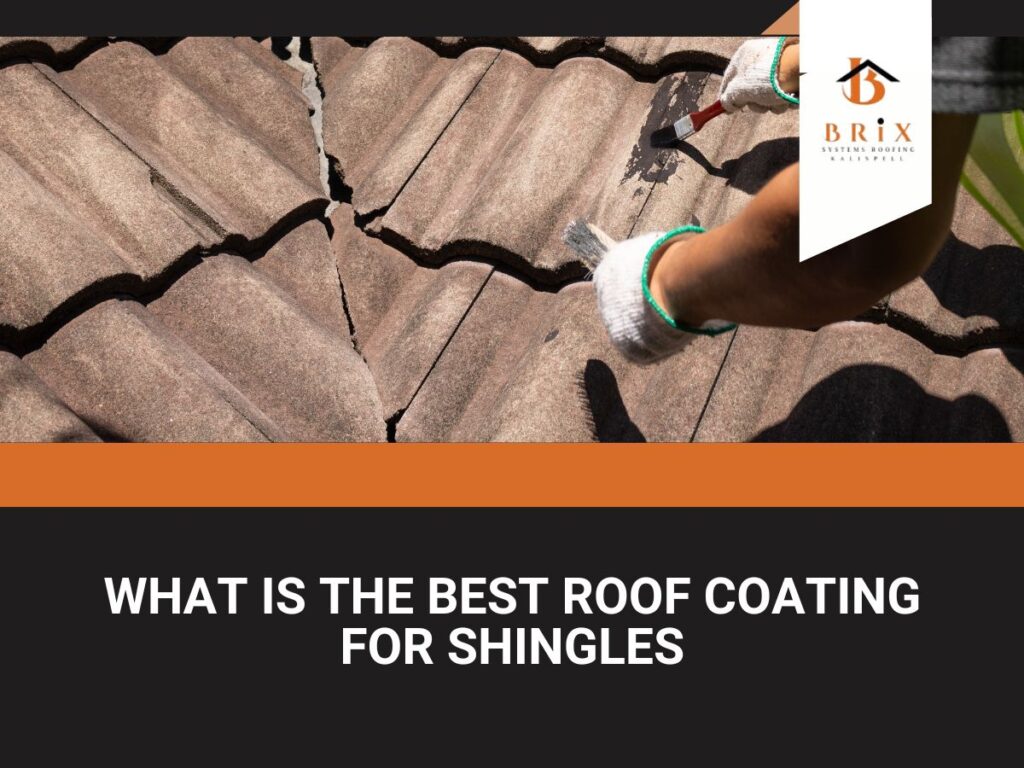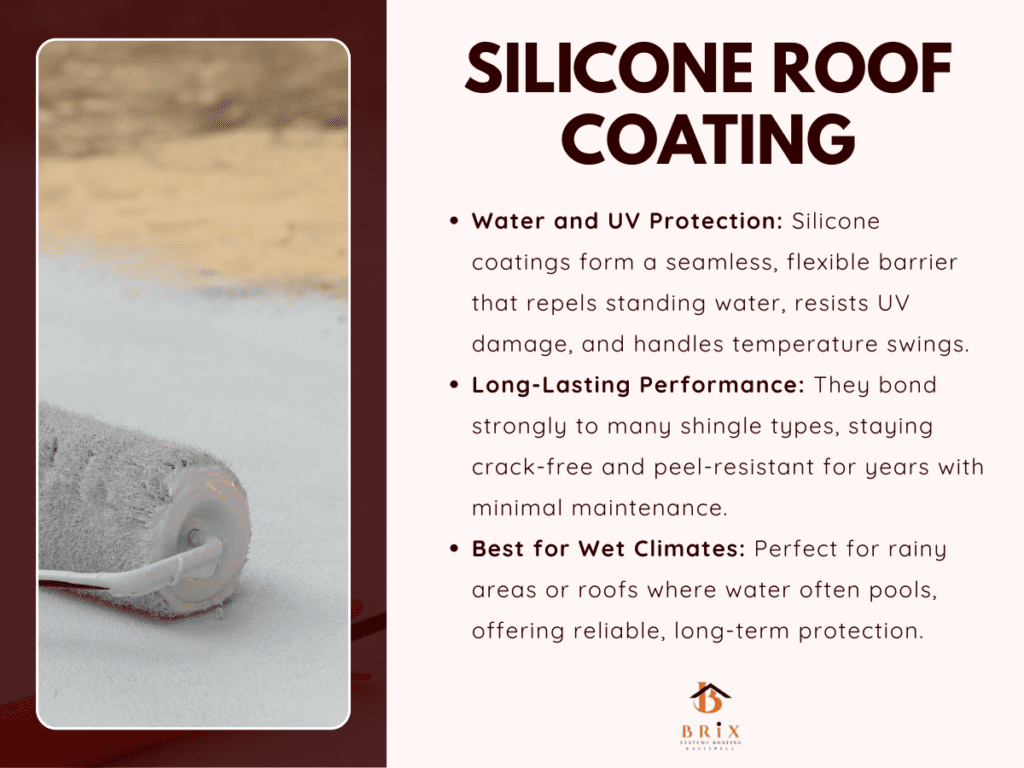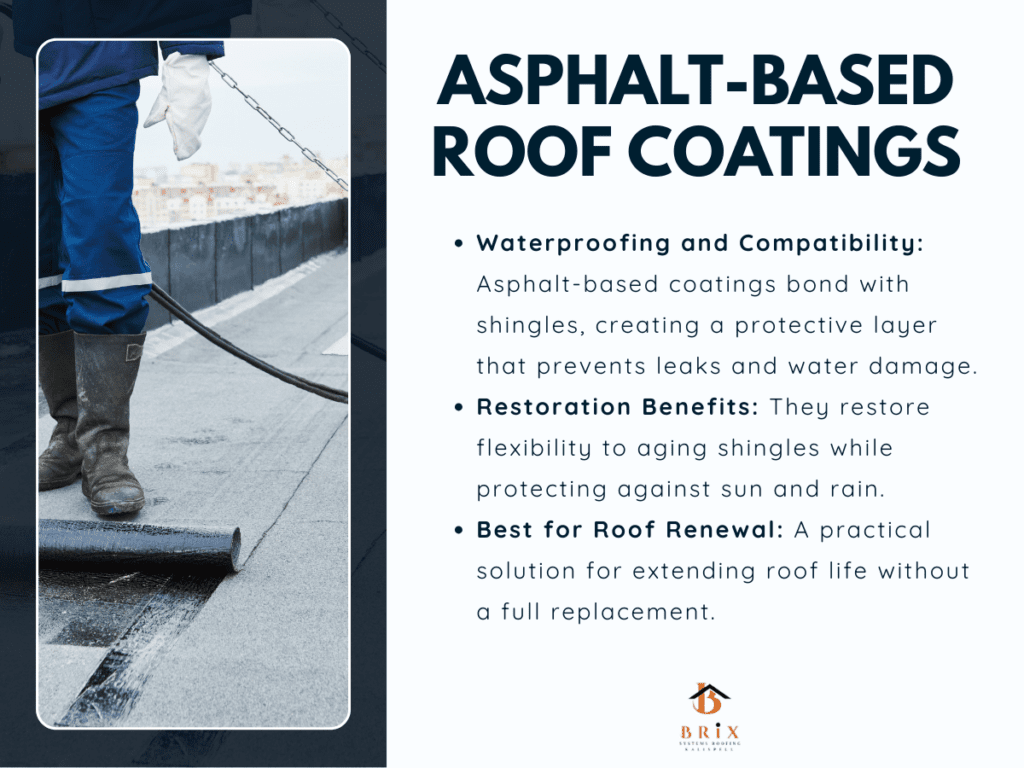
Shingle roofs, widely favored for their balance of durability and appearance, are not exempt from the gradual effects of time and weather. Rain, wind, sunlight, and fluctuating temperatures slowly wear down the protective capabilities of shingles.
A solution that has gained considerable attention is the application of roof coatings specifically formulated for shingle surfaces. They form a resilient barrier that helps minimize the gradual erosion shingles face throughout the seasons.
The roofing industry has introduced a wide variety of coating products designed to address different environmental conditions and roofing materials. Each type of coating interacts with shingle materials in unique ways, affecting performance, longevity, and maintenance requirements.
The surface of your roof faces changing weather, constant sunlight, moisture, and debris. Over time, these elements weaken the protective properties of shingles. Applying a roof coating creates an added layer that helps the shingles handle these challenges and maintain their function for a longer period.
Without this added protection, shingles can wear out faster, which leads to leaks, heat loss, and costly repairs.
Shingles contain granules that protect the asphalt beneath them. With time, those granules loosen, exposing the more vulnerable layers.
A properly applied coating can help hold remaining granules in place while filling in minor gaps or imperfections that develop across the roof surface. When the coating bonds with the shingles, it creates a uniform seal that resists moisture infiltration.
This barrier can reduce the risk of trapped water leading to mold growth or rot in the underlying structure. As moisture sits on a roof, it can work into even the smallest cracks.
Heat from the sun can create significant strain on your shingles. Over the years, UV rays cause the asphalt to become brittle and lose flexibility.
Some roof coatings include reflective properties that help reduce how much heat the shingles absorb. This reduction in surface temperature can limit the thermal expansion and contraction that often leads to cracking or curling.
Lower surface temperatures can also help control indoor temperatures. When less heat transfers into the attic, your cooling system may not need to work as hard during the hotter months.
Roofs collect dust, pollen, and pollution over time. In humid conditions, this buildup can encourage the growth of algae or mildew. Certain roof coatings include additives that resist biological growth, which helps maintain the roof’s appearance and performance.
Clean surfaces also allow rainwater to run off more efficiently, minimizing the chance of standing water that can seep into cracks. Besides keeping the roof cleaner, these coatings make maintenance easier.
You may find that seasonal cleanings become simpler, and minor issues appear less frequently. This can reduce the time and cost involved in regular upkeep, giving you more confidence that your roof remains in strong condition.
Several important factors contribute to how well the coating will perform once applied. These considerations help ensure that the chosen product not only matches the current condition of the roof but also aligns with long-term durability expectations.
A well-informed decision can strengthen the roof’s defense against weather damage, extend its life, and help control ongoing maintenance costs.
Some roofs may be newer with minimal wear, while others may show signs of aging such as granule loss, curling edges, or minor cracking. The condition of the roof directly influences which coatings are most appropriate.
Applying a coating to severely deteriorated shingles may offer limited benefits if the structural integrity of the roof is already compromised. Asphalt shingles remain the most common, but specialty shingles made from composite or fiberglass blends may require coatings with specific chemical compatibility.
Areas with heavy rainfall, frequent hailstorms, or prolonged humidity place different demands on coatings compared to regions with high temperatures and strong sun exposure. Some coatings excel at repelling moisture, while others offer superior ultraviolet resistance or improved flexibility in fluctuating temperatures.
In certain regions, roofs may also face industrial pollutants, salt air, or airborne debris that can accelerate wear.
While cost naturally influences any home improvement decision, it should be weighed alongside long-term performance and maintenance requirements. Some coatings offer lower upfront costs but may require more frequent reapplication or provide a shorter service life.
Others come at a higher price initially but deliver longer-lasting protection, potentially lowering the total cost of ownership over time. Certain coatings may require periodic inspections, touch-ups, or cleaning to maintain their effectiveness.
Every product performs differently when applied to shingle surfaces, as each formulation is designed to address particular roofing challenges. A well-matched coating can significantly enhance the lifespan and performance of shingles while also supporting broader goals such as moisture control, energy efficiency, and impact resistance.
Each option carries strengths and limitations.

Acrylic coatings remain one of the most widely used options for protecting shingle roofs. Their formulation is designed to reflect a substantial portion of the sun’s ultraviolet radiation, which helps preserve the flexibility and color of the shingles.
In regions where the sun’s intensity accelerates roof aging, acrylic coatings help reduce heat absorption and limit surface temperature increases. Aside from temperature control, acrylic coatings also offer moderate protection against moisture and can improve the appearance of worn shingles.
Their ease of application and affordability often appeal to homeowners looking for an effective way to extend roof life without extensive investment. However, they tend to perform best in climates with less frequent standing water or extreme humidity.

Silicone coatings have a chemical makeup that allows them to repel standing water and remain flexible. This makes them especially valuable in regions that experience heavy rainfall or where water tends to pool on the roof surface.
Silicone coatings form a durable, seamless barrier that resists cracking and peeling, even under fluctuating temperatures. They also possess natural resistance to ultraviolet degradation, giving them strong performance in both hot and wet conditions.
Due to their strong adhesion properties, they can bond effectively to a variety of shingle surfaces when properly prepared, maintaining protection for many years with minimal maintenance.

Polyurethane coatings have a dense composition that allows them to absorb the force of hail, falling branches, and foot traffic without easily sustaining damage. This strength can help prevent punctures or tears that might otherwise compromise the shingles beneath.
In addition to impact resistance, polyurethane coatings exhibit strong resistance to chemicals and environmental pollutants. This makes them suitable for areas exposed to industrial or urban contaminants.
Their durability also allows them to maintain flexibility during thermal expansion cycles, which helps prevent surface cracking over time.

Asphalt-based coatings have long served as a reliable choice for enhancing the performance of traditional asphalt shingle roofs. Their composition closely matches the original materials of the shingles, allowing for excellent compatibility and bonding.
These coatings provide an additional waterproof layer that helps guard against leaks, while also restoring some of the lost flexibility in aging shingles. In climates that experience both significant rainfall and strong sun exposure, asphalt-based coatings can deliver balanced protection.
They also serve as a practical option when roof restoration is necessary but full replacement is not yet required.
Applying roof coatings to shingles requires careful attention at every stage. The process may seem straightforward, but small missteps can undermine the coating’s ability to protect the roof.
A well-applied coating can add years to a roof’s lifespan, but poor technique or rushed preparation can shorten that window considerably.
Coatings cannot compensate for structural issues such as cracked, curled, or missing shingles. Attempting to cover damaged areas may temporarily conceal problems, but moisture can still penetrate and cause hidden deterioration beneath the surface.
Surface cleanliness also plays a critical role in adhesion. Dirt, moss, loose granules, and oils prevent the coating from bonding securely to the shingles.
Any debris left behind can lead to uneven coverage, blistering, or peeling. Professional contractors typically recommend a thorough cleaning, often through soft washing, to ensure the surface is ready for treatment.
Some products, particularly those designed for flat roofs or metal surfaces, may contain solvents or chemicals that can soften or degrade asphalt shingles. Using an incompatible product risks causing more harm than protection, potentially voiding existing warranties or creating new maintenance issues.
Consulting product specifications and verifying manufacturer recommendations remains essential. Reputable suppliers clearly state whether their coatings are suitable for shingle roofs and under what conditions they should be applied.
Careful product selection helps avoid chemical reactions that compromise the roof's integrity.
Weather conditions at the time of application directly affect how well the coating adheres and cures. High humidity, low temperatures, or unexpected rain can prevent the coating from setting properly, leading to bubbling, streaking, or incomplete coverage.
Even strong winds can introduce dust and debris onto freshly coated surfaces. Scheduling the application during a period of stable, dry weather increases the likelihood of success.
Many coating manufacturers specify ideal temperature and humidity ranges for optimal performance.
Roof coatings require consistent thickness to perform as intended. Applying too thin a layer may leave vulnerable areas exposed, while excessive thickness can lead to cracking or sagging as the coating cures.
Uniform application ensures that the coating delivers full protection across the entire roof surface. Experienced professionals use calibrated equipment to apply coatings evenly, often measuring coverage rates to verify that the recommended thickness has been achieved.
The application of roof coatings for shingles represents both a preventive measure and a long-term investment in the integrity of the home. Proper application, consistent maintenance, and thoughtful product selection ensure that the coating delivers reliable protection throughout its intended service life.
The quality and type of shingles beneath the coating also matters. The performance of any coating is influenced by the condition and durability of the underlying shingles.
Those exploring options for shingle replacement or installation may also consider how compatible various shingle products are with protective coatings. Shingles designed with stronger base materials and advanced protective layers can enhance the effectiveness of coatings and extend maintenance cycles.